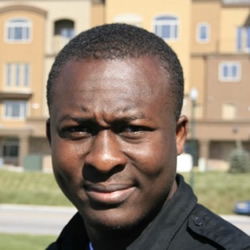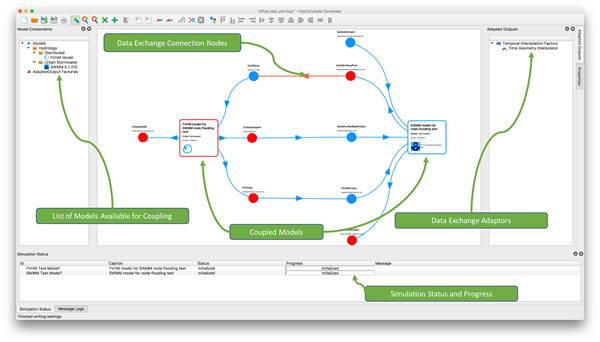News and Highlights
This is a list of past iUTAH EPSCoR news from 2012 to 2018.
July 22, 2015
iUTAH Red Butte Creek Research
Nearly 50 researchers are converging on Red Butte Creek this week in a coordinated effort to understand the watershed like never before. The “synoptic sampling” event organized by iUTAH researcher and University of Utah hydrologist Paul Brooks brings together faculty and students from the University of Utah, Brigham Young University, Utah State University, Utah Valley University, Westminster College, and elsewhere to take a comprehensive “snapshot” of the water and surrounding land and air to better understand how to maintain a safe, stable water supply in the face of growing demand for water and a changing climate.

To learn more you can read, watch, and liste to what Salt Lake City-based news outlets have had to say about the event:
June 9, 2015
Learning What People Want to Know About Water
iUTAH and USU’s ENVS 6410 Translational Ecology course are developing a web page that will help people find answers to the questions they have about water sustainability in Utah. At Science Unwrapped they asked people to take a survey that helped us learn which water-related questions are most important to Utah residents.

June 8, 2015
June 4, 2015
New Computer Software Helps Scientists See How Everything in Nature is Connected

Caleb Buahin, Utah State University, Research Assistant
Water touches everything. Farms, households, businesses, and nature all depend on water – and each of these also affects how water reaches the other entities that depend on it. As society makes greater demands on Utah’s water resources, scientists increasingly are asked to predict how the natural water cycle and our engineered water systems will respond to pressures such as population growth and climate change. What must Utah do to adapt to changes in snowfall or stream flows? How can we meet the needs of a population that could double in 40 years?
To make these predictions and begin to work toward solutions, scientists use mathematical “models” that account for the various factors that influence water flows and uses. These models – actually sophisticated computer programs – must be complex enough to describe how scientists believe that natural and built water systems behave, yet simplified enough that they can be useful to decision makers who must make choices with data that may be limited or incomplete. These data, called input variables, are processed in mathematical equations to predict the consequences for desired outputs, i.e., the products and services that society and nature need from water. For instance, a hydrologic model might take in data on rain and snowfall, air temperature, solar radiation, etc., as input variables to produce outputs such as river flows, evaporation, and plant uptake.

Figure 1: Simplified Representation of a Mathematical Mode
Scientists who study different domains of the water system develop unique models that can answer the questions that matter to them. For example, a hydrologist may want to predict how stream flows will decrease over the summer after the snow melts, while an industrial engineer might want to predict how a new technology can reduce the amount of water needed daily to cool an electrical plant. Their respective models both rely on information about water availability and desired outputs, but they probably won’t account for all of the factors that are part of the other’s model. To answer the larger questions about how Utah can respond to changes in water supply and demand, more holistic models are needed that cover multiple domains of the water system.
That’s the problem Caleb Buahin is working on. Caleb, a postdoctoral researcher with the iUTAH project at Utah State University, has developed a flexible software framework called HydroCouple (Figure 2) that allows scientists to bring together models from different domains and scientific disciplines. This approach, called component-based modeling, allows for the communication and exchange of information during calculations. It allows scientists to test and refine hypotheses about how water systems behave by experimenting with different models using the same framework.

Figure 2: Software Framework Developed for Coupling Models
Caleb’s current work involves coupling together models that simulate the natural and built portions of urban water systems. By working with the City of Logan and using aquatic and climate data from iUTAH’s Gradients Along Mountain to Urban Transitions (GAMUT) network, he is able to examine present and future water capacity related to the cities’ stormwater system. An example output from his work shows the interactions between the canal system and the engineered stormwater infrastructure.
By demonstrating how this framework can be useful for bringing together models and data for different aspects of Utah’s water system, Caleb is creating software tools and guidance that can help other researchers evaluate not just water systems but other natural resource systems. In so doing, scientists will be able to avoid the pitfalls of studying parts of a problem independently, without considering the important ways that different resources affect each other and our future.
June 4, 2015
iUTAH attends the National Conference of Undergraduate Research
The National Conference of Undergraduate Research (NCUR) is an interdisciplinary conference where students representing universities from all around the U.S. present their research in oral and poster presentations. The conference was held at Eastern Washington University in Cheney, WA this April. iUTAH undergraduate researchers, Anne Thomas, Grant Holyoak, and Andrew Butterfield presented their research.
Anne attended the conference this April to present the urban tree survey she did as an iFellow in the summer of 2014. She has continued to work on the project and is currently writing a paper based on the study. Anne said, “NCUR was a wonderful opportunity to engage with others about my work. It was stimulating talking with so many other students involved with exciting research. I gained perspective on other research going on at the undergraduate level throughout the country and felt like part of a community. I made friends and felt respect for the accomplishments of every student there. I also feel more prepared for conferences I’ll attend in the future—I learned a lot about the conference atmosphere and organization, how to balance the demands of the conference, and how to make the most of my time there. I’m grateful for the opportunity I had to attend NCUR and look forward to where my research will take me in the future.”


June 2, 2015
Michelle Baker, Jeff Horsburgh, Dan Bedford, Rita Teutonico and Stephanie Mitts participated in the NSF Incubating Transformations event on April 15, 2015. They presented on the importance of EPSCoR in transforming the research culture within the state of Utah.



